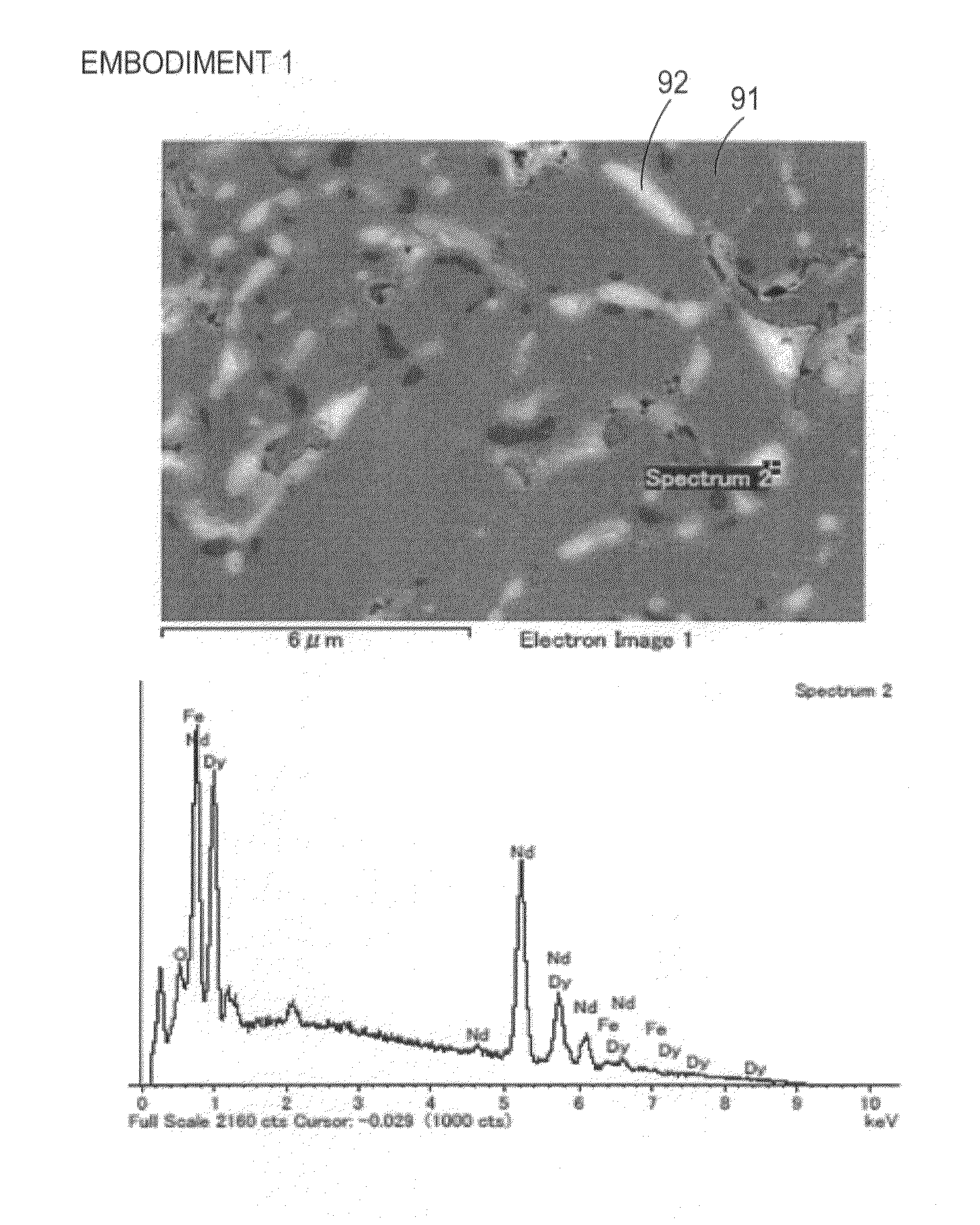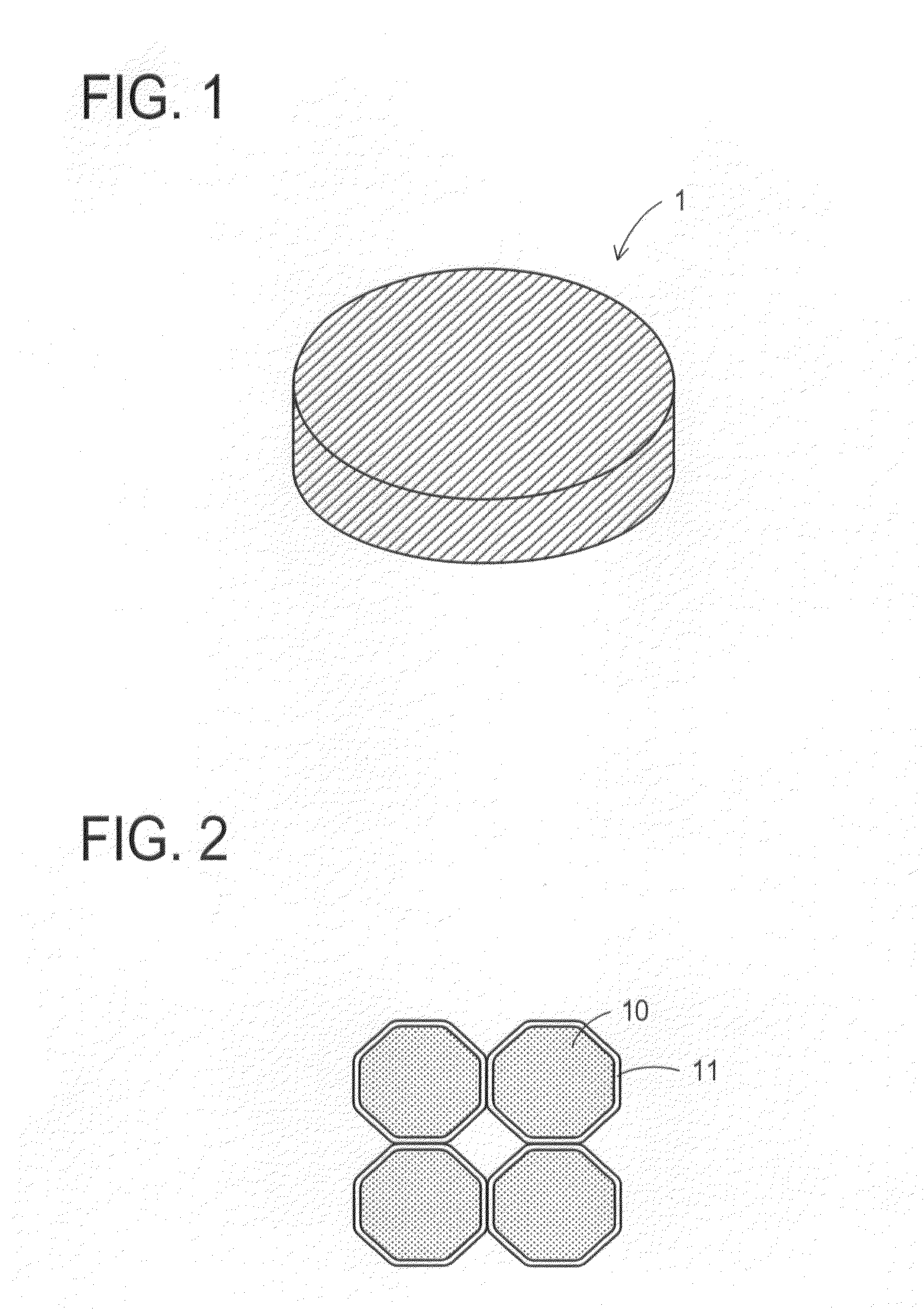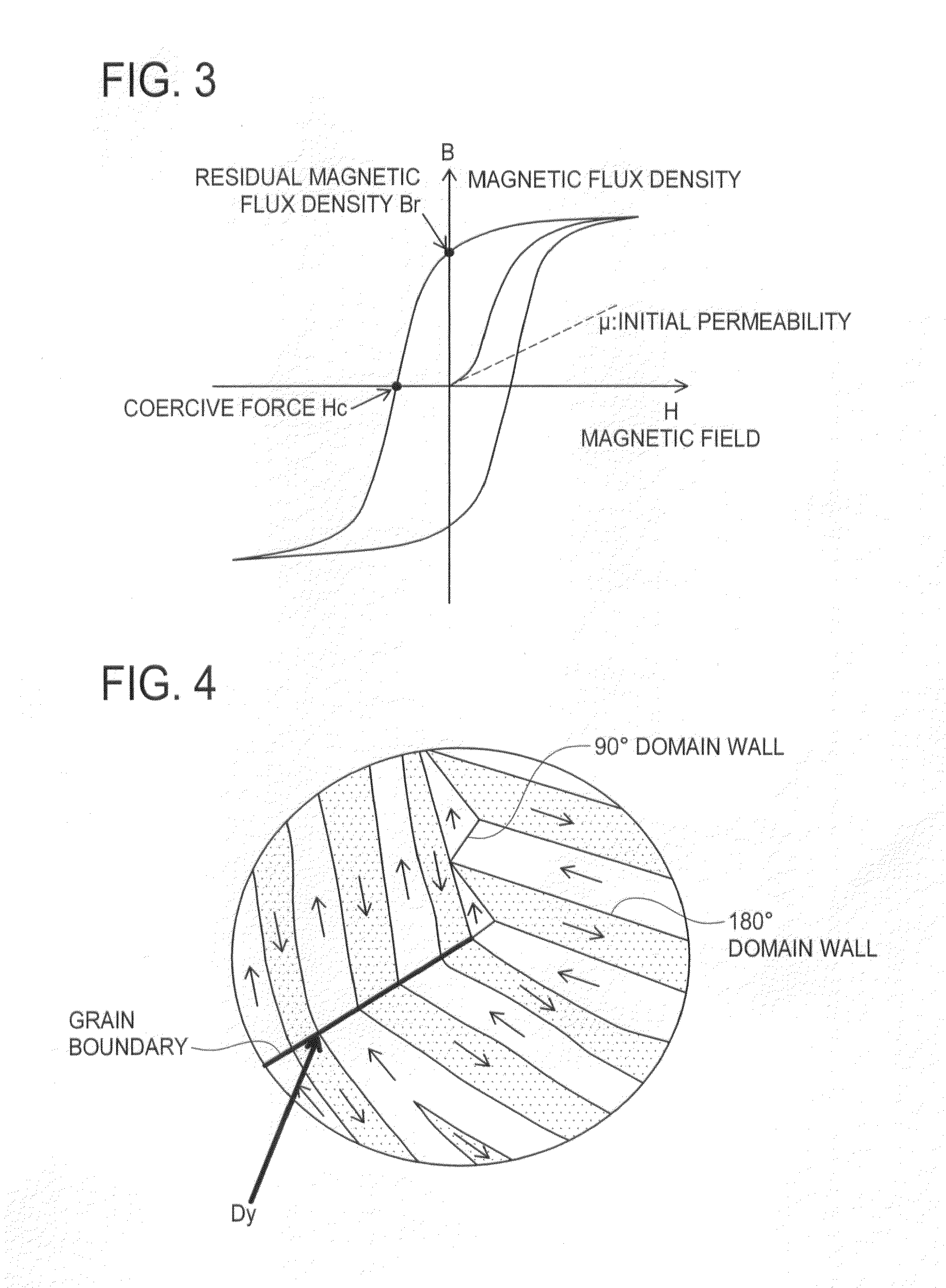Permanent magnet and manufacturing method thereof
a permanent magnet and manufacturing method technology, applied in the field of permanent magnets, can solve the problems of poor heat resistance, methods have their own defects, and the diffusion length of dy or tb cannot be extended to a grain boundary phase formed inside, so as to reduce the residual magnetic flux density and coercive force, and improve coercive force. effect, the effect of reducing the activity level
- Summary
- Abstract
- Description
- Claims
- Application Information
AI Technical Summary
Benefits of technology
Problems solved by technology
Method used
Image
Examples
embodiment 1
[0092]In comparison with fraction regarding alloy composition of a neodymium magnet according to the stoichiometric composition (Nd: 26.7 wt %, Fe (electrolytic iron): 72.3 wt %, B: 1.0 wt %), proportion of Nd in that of the neodymium magnet powder for the embodiment 1 is set higher, such as Nd / Fe / B=32.7 / 65.96 / 1.34 in wt %, for instance. Further, 5 wt % of dysprosium n-propoxide has been added as organometallic compound containing Dy (or Tb) to milled neodymium magnet powder. A calcination process has been performed by holding the magnet powder before compaction for five hours in hydrogen atmosphere at 600 degrees Celsius. The hydrogen feed rate during the calcination is 5 L / min. Sintering of the compacted-state calcined body has been performed in the SPS. Other processes are the same as the processes in [Second Method for Manufacturing Permanent Magnet] mentioned above.
embodiment 2
[0093]Terbium ethoxide has been used as organometallic compound to be added. Other conditions are the same as the conditions in embodiment 1.
embodiment 3
[0094]Dysprosium ethoxide has been used as organometallic compound to be added. Other conditions are the same as the conditions in embodiment 1.
PUM
| Property | Measurement | Unit |
|---|---|---|
| Temperature | aaaaa | aaaaa |
| Temperature | aaaaa | aaaaa |
| Temperature | aaaaa | aaaaa |
Abstract
Description
Claims
Application Information
 Login to View More
Login to View More - R&D
- Intellectual Property
- Life Sciences
- Materials
- Tech Scout
- Unparalleled Data Quality
- Higher Quality Content
- 60% Fewer Hallucinations
Browse by: Latest US Patents, China's latest patents, Technical Efficacy Thesaurus, Application Domain, Technology Topic, Popular Technical Reports.
© 2025 PatSnap. All rights reserved.Legal|Privacy policy|Modern Slavery Act Transparency Statement|Sitemap|About US| Contact US: help@patsnap.com



